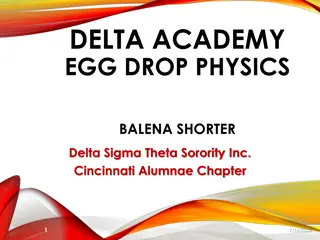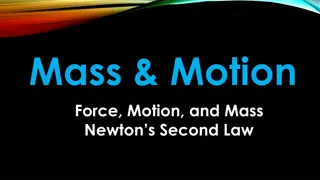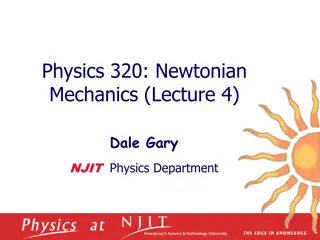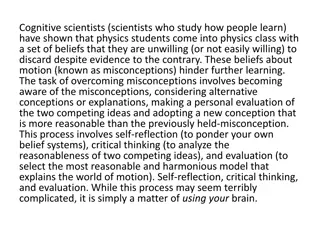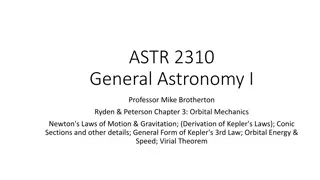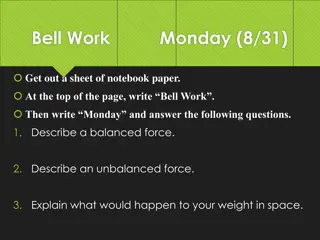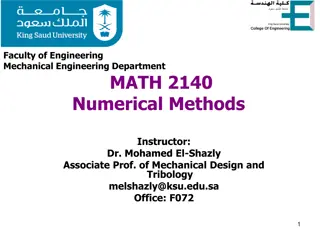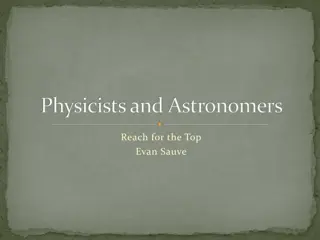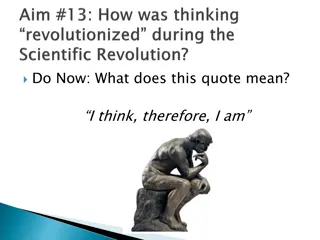Understanding Newton's Laws of Motion
Explore the fundamental concepts of Newton's Laws of Motion, including net forces, combining forces, balanced versus unbalanced forces, and the concept of inertia. Learn how these principles explain the behavior of objects in motion and at rest, and discover the impact of mass on an object's resistance to changes in motion. Dive into practical examples and applications of these laws to comprehend the dynamics of motion in the physical world.
Download Presentation

Please find below an Image/Link to download the presentation.
The content on the website is provided AS IS for your information and personal use only. It may not be sold, licensed, or shared on other websites without obtaining consent from the author. Download presentation by click this link. If you encounter any issues during the download, it is possible that the publisher has removed the file from their server.
E N D
Presentation Transcript
DO NOW Write your HW in your agenda Update your table of contents: Page # Title 154 (We will be using this page later in the week) 155 Newton s Laws of Motion Date 04/13 Have pages 152 and 153 ready to be checked Fold the notes and attach to page 155. You have 10 minutes to find and identify the types of friction on the 15 cards hidden in the room. (all can be seen without moving anything)
NET FORCES The combination of all the forces acting on an object is the net force
COMBINING FORCES If the forces are in the same direction, the net force is the sum of those forces. If the forces are in opposite directions, the net force is the subtraction of those forces.
BALANCED FORCES AND UNBALANCED FORCES If the combined forces result in a net force of 0, this is called a balanced force. If the combined forces result in a net force that is NOT 0, this is called an unbalanced force.
THIS IS NEWTONS FIRST LAW OF MOTION An object at rest will remain at rest and an object moving at a constant velocity will continue at the same velocity, unless acted upon by an unbalanced force.
INERTIA Whether an object is moving or not, it resists any change to its motion. This tendency to resist a change in motion is called inertia.
INERTIA Inertia depends on mass, which means some objects have more inertia than others. The greater the mass of an object, the greater its inertia, and the greater force is required to change its motion.
Using Newtons first law of motion, explain why the skater moved.
DO NOW Update notebooks and record HW. Pages 156 157 Title Motion Misconceptions Newton s 3rdLaw Date 04/14 04/14 Pay attention for a challenge I am issuing you.
NEWTONS SECOND LAW OF MOTION Which requires more force to move- a heavier object or a lighter object?
NEWTONS SECOND LAW OF MOTION States that The acceleration of an object depends on the object s mass and on the net force acting on the object.
NEWTONS SECOND LAW OF MOTION This relationship between force, mass, and acceleration can also be written as an equation. F=ma
PRACTICE PROBLEM A speedboat pulls a 55-kg water- skier. The force causes the skier to accelerate at 2.0 m/s2. Calculate the net force that causes this acceleration. Force= 55kg * 2.0m/s2 Force=110N
EXIT SLIP You are sitting in a moving car and the driver suddenly pushes down on the brake. 1. Describe your motion if you were wearing a seatbelt. 2. Describe your motion if you weren t wearing a seatbelt. 3. Which law of motion does this situation relate to?



